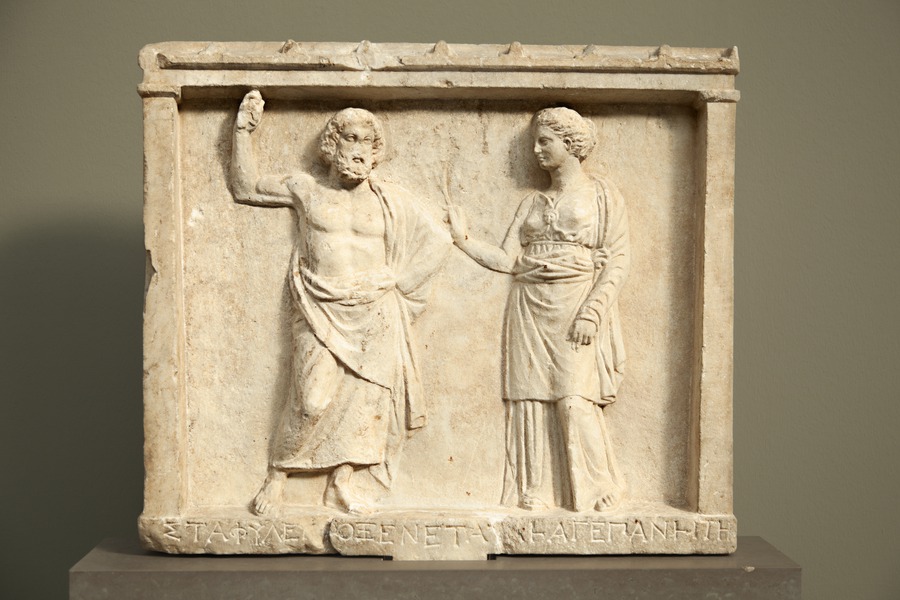Votive relief
Summary
The relief is made of fine-grained, white, micaceous marble. The tenon (9.5×9.5×10) for insertion and bordering area has been broken off and has been reattached, and the nose of the man is damaged. Traces of colour in the eyes, hair of the man, and under the cornice are visible to the naked eye. Traces of Egyptian Blue were found using Visible Induced Luminescence on the background.
In August 1994, a marble sample was taken for an isotopic analysis.
Description of object
In a naiskos flanked by antae and crowned with a cornice with antefixes two persons of equal height are standing. To the right is Athena clad in a high-belted peplos and a large cloak, the end of which is held under her left arm. On her breast she wears the aegis with the gorgon’s head; she has an elegant hairstyle and is unarmed. To her left a long-haired, bearded man is leaning on s long staff which was originally painted on the background. He is wrapped in a large cloak folded over the front and swept behind his back and over his shoulder, covering his left arm and hand.
Choice of methods
Visual examination
- Macroscopic
Technical imaging
- VIL
Marble identification method
- Isotopic analysis. Results: d13C, 3,016 - d18O, -3,63.
Technical imaging
VIL: Luminescent particles in two areas of the background.
Bibliography
F. Poulsen (1951), Catalogue of Ancient Sculpture in the Ny Carlsberg Glyptotek, Copenhagen, cat. no. 233b.
M. Moltesen (1995), Catalogue. Greece in the Classical Period. Ny Carlsberg Glyptotek, Copenhagen, cat. no. 76.
- IN 2345
- Relief
- Late 4th century B.C.E.
- Classical
- White marble from Mylasa or Usak
- Bought in 1909.
- H. 53 cm.; W. 62 cm.
Selected photos
- Canon EOS 5D Mark II
- Adobe Photoshop CS5 macintosh
- Photographed by Maiken Norup, 2011

